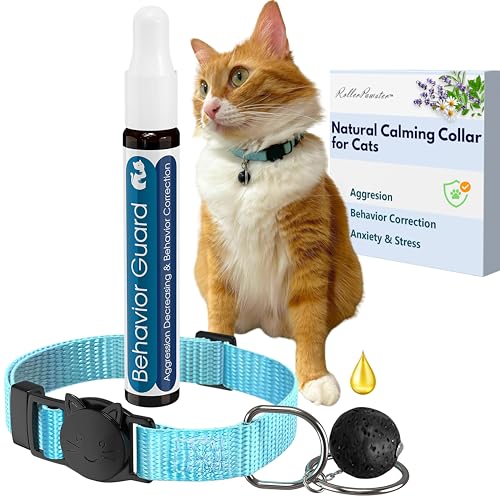Understanding Aggression between Cats
If you’re concerned about aggression between your cats, it’s important to understand what may be causing it. Cats are naturally territorial creatures, and conflicts can arise when they feel their territory is being invaded. Additionally, cats have a social hierarchy, and disputes may occur when there’s a power struggle for dominance.
To better understand aggression between cats, keep the following points in mind:
- Territorial Instincts: Cats are inherently territorial animals. They mark their territory with scent glands and may become aggressive towards other cats that encroach on their space. This behavior is more likely to occur with outdoor cats, but it can also happen between indoor cats. Providing multiple resources, such as litter boxes, food bowls, and scratching posts, can help reduce territorial disputes.
- Social Hierarchy: Cats establish a hierarchy within their group, which can lead to conflicts. Cats may engage in aggressive behavior in an attempt to establish dominance or maintain their position in the social pecking order. Understanding and respecting their natural dynamics can help prevent such conflicts.
- Stress and Fear: Cats may become aggressive if they feel threatened, stressed, or fearful. Changes in the environment, such as moving to a new home or introducing a new member to the family, can trigger these emotional responses. Providing a safe and secure environment, providing hiding spots, and using calming techniques, such as pheromone diffusers, can help alleviate their anxiety.
- Health Issues: It’s important to rule out any underlying health conditions that could be causing aggressive behavior. Pain or discomfort due to dental problems, infections, or other ailments can contribute to a cat’s aggression. If you notice any changes in your cat’s behavior, consult with a veterinarian to ensure their well-being.
Understanding the root causes of aggression between cats is crucial for finding effective solutions. By addressing their territorial instincts, social hierarchy, stress levels, and potential health issues, you can create a harmonious environment for your feline companions to coexist happily. Remember, consistency, patience, and positive reinforcement are key when dealing with aggression between cats.
Common Causes of Aggression in Cats
Cats are amazing creatures, aren’t they? But sometimes, they can display aggressive behavior that leaves us perplexed. Understanding the root causes of aggression in cats is essential to help them lead happier lives. Let’s explore some common triggers for feline aggression:
- Territory: Cats are territorial animals, and conflicts can arise when their territory is threatened. This can happen when a new cat is introduced to the household or when outdoor cats encroach upon their space.
- Social Hierarchy: Cats have a natural instinct to establish a social hierarchy. When multiple cats live together, conflicts may arise as they compete for dominance and establish their positions within the group.
- Stress: Just like us humans, cats can experience stress. Changes in their environment, such as moving to a new home or encountering loud noises, can trigger aggressive behavior as a response to feeling overwhelmed.
- Fear: Cats are sensitive creatures, and fear can provoke aggressive reactions. They may become defensive when faced with unfamiliar people, animals, or situations that they perceive as threatening.
- Health Issues: It’s important to remember that aggression can sometimes be a sign of an underlying medical problem. Pain or discomfort from conditions such as arthritis, dental issues, or urinary tract infections can cause cats to lash out.
Now that we have a better understanding of the common causes of aggression in cats, we can take steps to create a harmonious environment for our feline friends. Remember, consistent and patient interaction, along with providing a safe and secure space, can go a long way in managing and reducing aggression.
But what if your cat’s aggressive behavior persists? It’s always a good idea to consult with a veterinarian who can assess your cat’s health and behavior. They can provide expert guidance and recommend appropriate interventions to help address the aggression.
Remember, aggression in cats can be managed and mitigated with love, patience, and the right interventions. Let’s continue to learn more about how we can promote a peaceful coexistence among our feline companions.
Resource Guarding: A Common Trigger for Aggression
Cats are naturally territorial creatures, and resource guarding is a common trigger for aggression between them. As a cat lover, it is important to understand this behavior to ensure a harmonious environment for your furry friends. Here are a few key points to help you grasp the concept of resource guarding:
1. What is resource guarding?
Resource guarding occurs when a cat becomes possessive over an item, such as food, toys, or even their favorite spot on the couch. They may display aggressive behaviors to protect what they perceive as their valuable possessions.
2. Why do cats engage in resource guarding?
Resource guarding stems from a cat’s instinct to survive and protect their resources. In the wild, cats must compete for food and defend themselves against predators. This innate behavior can carry over into their domesticated lives.
3. Signs of resource guarding
Keep an eye out for signs of resource guarding in your cats. They may exhibit behaviors such as growling, hissing, swatting, or even biting. They may also become defensive and tense, trying to hide or guard their possessions.
4. How to manage resource guarding
To address resource guarding, you can take a few simple steps:
- Provide multiple resources: Ensure that each cat has their own separate food bowls, litter boxes, and resting areas. This reduces the need for competition and minimizes the likelihood of resource guarding.
- Implement routine feeding: Establish a regular feeding schedule so that cats know when and how much they will be provided with food. This reduces the anxiety associated with resource scarcity.
- Encourage positive associations: By rewarding good behavior and ensuring a calm environment during mealtimes and play sessions, you create positive associations with resources, reducing the urge to guard them.
- Seek professional help: If your cats’ resource guarding behavior persists or escalates, consult with a veterinarian or a professional animal behaviorist for guidance and support.
Understanding resource guarding as a common trigger for aggression between cats allows you to create a stress-free environment and prevent conflicts. By implementing these strategies, you can promote a peaceful coexistence among your beloved feline friends. Remember, patience and consistency are key in resolving aggression issues.
Social Hierarchy Disputes: Establishing Dominance
Understanding social hierarchy disputes among cats can help you manage aggression and create a harmonious environment for your feline friends. Cats are territorial animals with a natural instinct to establish dominance within a group. Here’s what you need to know:
Why do cats engage in social hierarchy disputes?
Cats are typically solitary animals, but they can form social groups if given the opportunity. Within these groups, cats establish a hierarchy based on dominance. This hierarchy helps maintain order and reduce conflict within the group. However, disputes over social rank can lead to aggression between cats.
Signs of social hierarchy disputes
It’s important to be able to recognize the signs of social hierarchy disputes between your cats. Look out for:
- Stalking behavior: One cat relentlessly follows and watches the other, seeking to establish dominance.
- Swatting and hissing: Cats may engage in physical confrontations, with one cat asserting dominance over the other.
- Blocking access to resources: Dominant cats may prevent their subordinate counterparts from accessing food, water, or litter boxes.
How to manage social hierarchy disputes
To create a peaceful environment and manage social hierarchy disputes among your cats, consider the following tips:
- Provide multiple resources: Ensure that each cat has their own food bowl, water dish, litter box, and resting areas. This reduces competition and prevents resource guarding.
- Implement routine feeding: Establish a feeding schedule that allows cats to eat in separate areas. This helps prevent conflicts over food.
- Encourage positive associations: Use treats, toys, and praise to reward cats for calm and friendly behavior towards each other. Reinforce positive interactions.
- Seek professional help if needed: If aggression persists or escalates, consult with a veterinarian or a cat behaviorist. They can provide guidance and develop a behavior modification plan tailored to your specific situation.
By understanding social hierarchy disputes and implementing these management strategies, you can create a peaceful and harmonious environment for your cats. Remember, patience and consistent effort are key.
Signs and Behaviors of Aggression in Cats
As a cat lover, it’s important to understand the signs and behaviors of aggression in cats. Recognizing these signs can help you address any issues and create a peaceful environment for your feline friends. Here are some key things to look out for:
1. Body Language: Pay attention to your cat’s body language. Signs of aggression can include a stiff posture, piloerection (raised fur), dilated pupils, hissing, growling, and an arched back.
2. Vocalization: Cats may use vocalization to express aggression. Listen for growling, yowling, hissing, or even screaming sounds.
3. Tail Position: The position of the cat’s tail can indicate aggression. A thrashing or lashing tail is a clear sign that your cat is feeling threatened or agitated.
4. Swatting: Cats may swat with their paws when they are feeling aggressive. Though it may not always cause harm, it’s a clear warning sign.
5. Defensive Posture: If your cat is crouching with their body low to the ground, their tail tucked between their legs, and their ears flattened, it’s a sign that they are feeling defensive and may become aggressive.
6. Scratching or Biting: Aggressive cats may resort to scratching or biting as a means of self-defense or as a way to assert dominance.
It’s essential to remember that aggression in cats can have various underlying reasons. Factors such as fear, stress, territorial instincts, past traumatic experiences, or even medical issues can contribute to aggressive behavior. If you notice any signs of aggression in your cat, it’s crucial to take action.
Remember, every cat is unique, and what works for one may not work for another. If you’re unsure how to handle the aggression or if it becomes unmanageable, seek the help of a professional veterinarian or animal behaviorist who can provide expert guidance.
Creating a safe and harmonious environment for your cats is achievable with patience, understanding, and the willingness to address any aggression issues that arise. By recognizing the signs and behaviors of aggression, you can take the necessary steps to help your beloved feline companions lead happy and balanced lives.
Strategies for Managing and Minimizing Cat Aggression
When dealing with aggression between cats, it’s important to remember that understanding and managing their behavior is crucial. Here are some strategies to help you create a peaceful and harmonious environment for your furry friends:
1. Provide Sufficient Resources
Make sure each cat has their own space, food, water, litter box, and resting areas. Lack of resources can lead to competition and aggression. Having separate resources for each cat can reduce conflict and promote a sense of security.
2. Gradual Introduction
When introducing a new cat into your home, take it slow. Start by keeping them in separate rooms and gradually allow them to interact under supervision. This gradual introduction gives them time to adjust and reduces the chances of aggressive behavior.
3. Positive Reinforcement
Reward your cats for good behavior and positive interactions. Use treats, praise, and playtime to reinforce positive interactions and discourage aggressive behavior. Positive reinforcement helps create a positive association and encourages peaceful interactions between your cats.
4. Play and Exercise
Provide plenty of play and exercise opportunities for your cats. Interactive toys, scratching posts, and vertical spaces can help release their pent-up energy and reduce stress. Regular play and exercise sessions can decrease the likelihood of aggression by keeping them mentally and physically stimulated.
5. Environmental Enrichment
Make sure your cats have a stimulating environment. Provide scratching posts, climbing trees, and hiding spots to give them outlets for natural behaviors. Additionally, consider using pheromone sprays or diffusers to create a calming atmosphere. A rich and fulfilling environment can help reduce stress and prevent aggression.
6. Seek Professional Help if Needed
If you’re unable to manage cat aggression on your own, don’t hesitate to seek professional help. A veterinarian or animal behaviorist can help assess the situation and provide tailored advice to address the aggression. They can also rule out any underlying medical issues that could be causing the behavior.
By implementing these strategies, you can create a safe and peaceful environment for your cats. Remember, understanding your cats’ needs and providing them with the necessary resources and care can go a long way in minimizing aggression and fostering a harmonious relationship between them.
Conclusion
By understanding and managing cat behavior, you can create a safe and peaceful environment for your feline friends. The strategies discussed in this article, such as providing sufficient resources, gradual introduction of new cats, positive reinforcement, play and exercise, and environmental enrichment, can help minimize aggression between cats.
Remember, cats are territorial animals, and conflicts may arise when their space feels threatened. By ensuring that each cat has their own resources, such as food, water, and litter boxes, you can reduce the likelihood of aggression. Additionally, gradually introducing new cats to each other and using positive reinforcement techniques can help foster a harmonious relationship.
Play and exercise are essential for cats as they help release pent-up energy and reduce stress. Engaging your cats in interactive play sessions and providing them with toys can redirect their aggression towards appropriate outlets.
Lastly, environmental enrichment, such as scratching posts, perches, and hiding spots, can create a stimulating and enriching environment for your cats, reducing boredom and potential aggression.
If you find that despite your efforts, cat aggression persists, don’t hesitate to seek professional help. A veterinarian or animal behaviorist can provide further guidance and assistance tailored to your specific situation.
By implementing these strategies and creating a peaceful environment, you can ensure a harmonious and happy coexistence between your furry companions.
Frequently Asked Questions
Q: How can I manage aggression between my cats?
A: Managing cat aggression starts with understanding their behavior. Provide ample resources like food, water, and litter boxes to avoid competition. Introduce new cats gradually, using positive reinforcement. Regular play and exercise can help release pent-up energy. Environmental enrichment, like hiding spots and climbing trees, can reduce stress. If the aggression persists, seek help from a professional behaviorist.
Q: What are some strategies for minimizing cat aggression?
A: Minimizing cat aggression involves meeting their needs. Ensure each cat has their space with separate food and water bowls. Use pheromone diffusers to create a calming environment. Provide vertical spaces and hiding spots to prevent conflicts. Encourage positive interactions by rewarding good behavior with treats or praise. Implement a routine that includes playtime and mental stimulation.
Q: How important is it to seek professional help for cat aggression?
A: Seeking professional help for cat aggression is crucial if your efforts haven’t succeeded. An expert behaviorist can analyze the situation, provide personalized strategies, and address any underlying issues contributing to the aggression. They can guide you in creating a safe and harmonious environment for your cats.
Q: What role does exercise play in managing cat aggression?
A: Exercise plays a vital role in managing cat aggression. Regular play sessions help release excess energy and reduce stress. Engaging toys that simulate hunting behavior can redirect aggressive tendencies and encourage positive interaction between cats. Exercise also promotes physical and mental well-being, enhancing overall cat behavior.
Q: How can environmental enrichment help reduce cat aggression?
A: Environmental enrichment creates a stimulating and fulfilling environment for cats, reducing their aggression. Provide scratching posts, cat trees, and interactive toys to redirect their energy. Offer hiding spots and elevated areas for cats to feel secure and avoid confrontations. Rotate toys and introduce new ones to provide variety and prevent boredom.
Q: What can I do to create a safe and peaceful environment for my cats?
A: To create a safe and peaceful environment for your cats, ensure each cat has access to necessary resources, like food, water, and litter boxes. Maintain a routine that includes playtime and grooming sessions. Use pheromone diffusers to promote a calm atmosphere. Provide vertical spaces and hiding spots. Minimize stressors like loud noises or sudden changes. Consistency and positive reinforcement will foster a harmonious relationship between your cats.

















